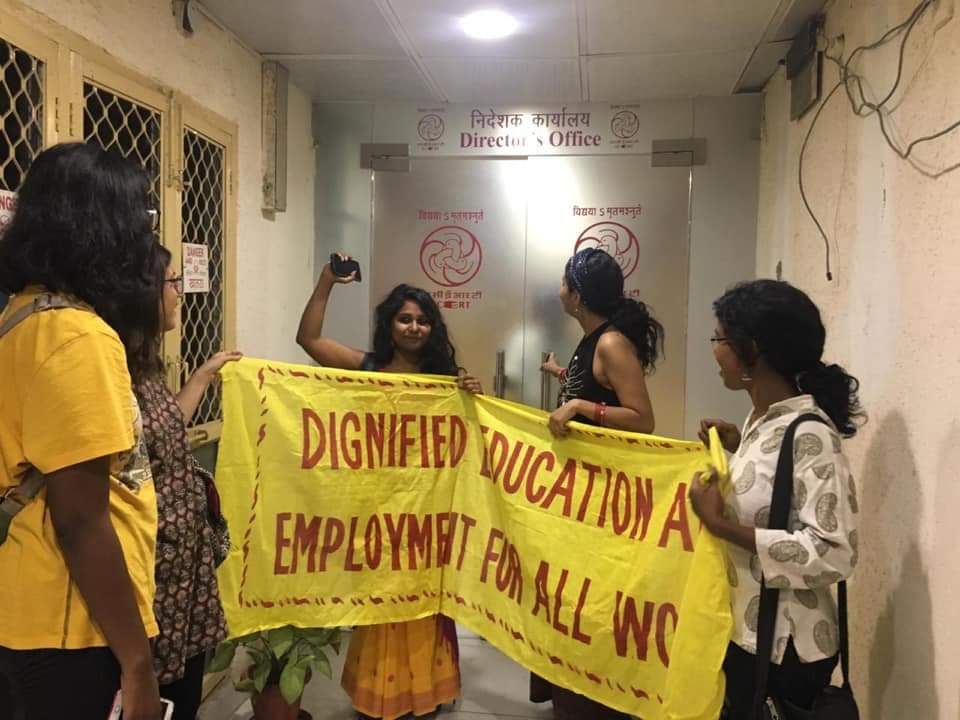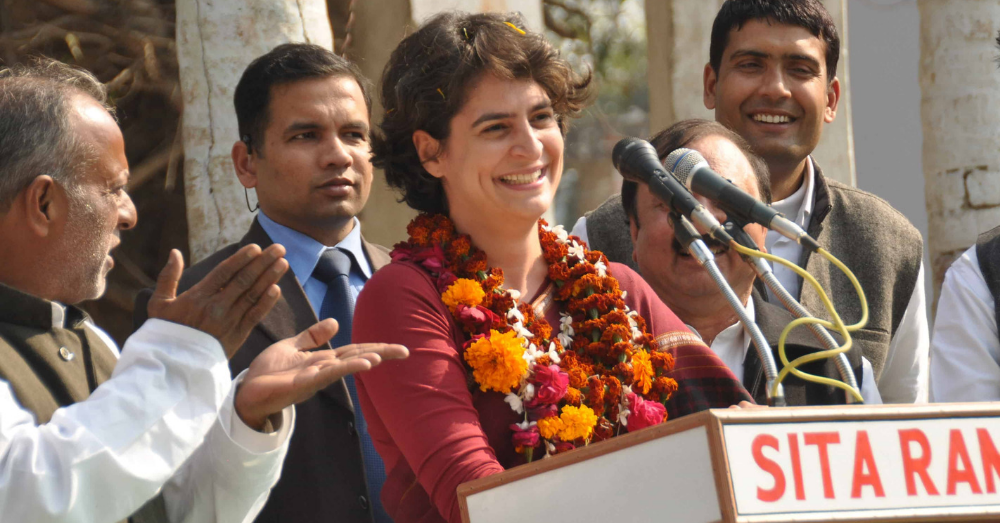The current Muslim political discussion in India seems to revolve around the question of political under-representation of Muslims. The Indian Constitution says the Indian Muslim community as an identifiable religious minority and envisages its appropriate representation in legislature bodies so as to assure the implementation of the minority rights. The success of Indian democracy depends on proper representation of minorities in decision-making processes. There are 172.24 million Muslims out of 1.21 billion population of India which is approximately 14.23% of the total population (Registrar General & Census Commissioner 2011).

There should be a minimum of 14% Muslim members in a decision-making body for a proper representation of Muslims. Institutions can care about minorities as long as their members are represented in them. Muslim participation in the political process, with parliament as its barometer, has been declining with every election – both in terms of their overall and proportional representation. Between 1980 and 2014, the representation of Muslim MPs in the lower house of India’s Parliament has declined by nearly two-third, even as the share of Muslims in the population rose during the same period.
In 1980, the Muslim members in Lok Sabha were 49 (approx 10% of total) which declined to 30 (approx 6% of total) in 2009. In the 16th Lok Sabha, Muslim MPs occupy only 20 seats out of 545 seats (approx 3.5% of total). For the first time, in Uttar Pradesh where Muslim population is over 18% of the total population, not a single Muslim MP got elected until the recent by-election in Kairana (Lok Sabha Constituency). From 2014 to 2018, in Uttar Pradesh there was not a single Muslim member in the Lok Sabha to represent 38.48 million of Muslims. In the 2014 Lok Sabha elections, Muslim MPs were elected only from seven states – West Bengal (8 members), Bihar (4 members), Jammu & Kashmir and Kerala (3 each), Assam (2 members) and Tamil Nadu and Telangana (one each), besides one from the Union territory (UT) of Lakshadweep. There is no representation of Muslims from the remaining 22 states and 6 Union territories. These 28 unrepresented states and UTs account for 54% of Muslim population in India and have 364 Lok Sabha seats.
Structure Of Political Disempowerment
India is the largest democracy in the world, yet there is very little representation of all communities, given their population. At present, the Bhartiya Janta party (BJP) which is in power seems to follow the soft Hindutva philosophy. The BJP did not field any Muslim candidates in the recent assembly elections in Uttar Pradesh, Gujarat, Chattisgarh and the North East. In 2009 Lok Sabha election, the BJP fielded only 4 Muslim candidates, (0.48% of the total) and only one got elected. In 2014, the BJP fielded only 7 Muslim candidates out of 428 (less than 2%) and none were elected. For the first time in Indian history, the winning party in the general elections had no Muslims in its parliamentary group in the Lok Sabha. In the recent Madhya Pradesh and Rajasthan assembly election, the BJP nominated one Muslim candidate each, out of total 230 seats in MP and 200 seats in Rajasthan. Only four Muslim candidates were fielded by BJP in five states assembly election.
In 2009, Congress fielded 29 Muslim candidates (7% of total) of whom 10 got elected. In 2014, Congress fielded 31 Muslim candidates of whom 7 got elected. Most Muslim MPs come from regional parties of different states. There were a total of 320 Muslim candidates from different parties out of 3245 total candidates in the 2014 Lok Sabha election. There were less than 10% Muslim candidates for 14.63% Muslims. If political parties didn’t give them a chance to get elected then one wonders how they can be part of the decision making body. The national as well as regional parties should give them an opportunity to be elected as a member of Parliament so they can contribute towards their community.
• The current Council of Ministers, headed by the Prime Minister, has only 1 Muslim minister Mukhtar Abbas Naqvi ( Ministry of Minority Affairs ) out of 74 ministers ( total numbers of ministers).
• Currently there is no Muslim Chief Minister of any state.
• Currently there is only one Muslim Governor Dr. Najma A Heptulla ( Manipur Governor ) out of 29 Governors.
• Currently there is only one Muslim Administrator Farooq Khan ( Lakshadweep UT ) out of 7 Lt. Governors and Administrators of Union territories.
The Indian Constitution is committed to the equality of citizens and the responsibility of the State to preserve, protect and assure the rights of minorities in matters of language, religion and culture.
In June, 2006, The Prime Minister Office (PMO) issued the notification for constitution of the High Level Committee for preparation of report on the Social, Economic and Educational Status of the Muslim community of India. On November 30, 2006, the report of the Sachar Committee was tabled in the Parliament. The committee was headed by Justice of the Delhi High Court, Rajinder Sachar. The Report highlighted a range of disabilities faced by the community and made a few of recommendations to address the situation. It placed Indian Muslims below Scheduled Castes and Scheduled Tribes in backwardness. “Political participation and representation in governance structures are essential to achieve fairness. Many alleged that participation is denied to Muslims through a variety of mechanisms. While it was pointed out that many names of Muslims were missing in the voter lists of a number of states, the committee’s attention was also drawn to the issue of Muslim concentration constituencies of Assemblies and Parliament declared as reserved for Schedule Caste persons while constituencies with very low Muslim population but high SC concentration remain unreserved. Hence, it was argued that Muslims are being systematically denied political participation”. (Sachar committee report 2006)
The lack of political representation of the largest Muslim community of 14% of the total population, reduces their say in the legislative process of the country resulting in government policies that are non representative of the minority issues. In 1952, Muslim representation in the Parliament was 4.3% and the highest numbers it has seen was in the Parliament during 1984-89 period when it stood at 8.4%. In 2014, Muslim representation, despite being the largest minority, was least in number. It had only 23 seats which means only approximately 4% representation for a community that constitutes 14% of the population.
In a secular country like India, every community should be given a fair chance to represent themselves in the decision making process, so they can also make some efforts for their community and raise their voices about the problems faced by their communities. Institutions can care about minorities as long as their members are represented in them. In recent years, the number of Muslim representatives have reduced. In India, the central government has only 1 Muslim cabinet minister in its council of ministers, despite the country having a total population of 172.24 million Muslims. In a state like Uttar Pradesh which has a Muslim population of 38.4 million there is only 1 Member of Lok Sabha (in by-poll elections) which is not appropriate at all. It is does not stand in good stead for a democracy like India. There is much lack of representation of the Muslim community in decision making processes.
There is a lot of stereotyping of Muslim leaders. The general idea comes from movies and baseless rumours. There are way too many movies portraying Muslims as terrorists or simply as wicked characters. People tend to get influenced easily and as a result, politicians mastermind plans to try and divide them on the basis of religion, to bag maximum numbers of votes. They spread hatred and create an image of the Muslim leaders in a way that people shy away from showing solidarity with them. This results in a dearth of Muslim leaders. And in this way one community is under-represented because of negligible number of representation from that community. India has never had a Muslim Prime Minister, although there are many Muslims leaders who have made India proud such as Moulana Abul Kalam Azad, Dr. Zakir Hussain and Dr. A.P.J. Abdul Kalam.
The post Where Is The Muslim Representation In Secular India? appeared first and originally on Youth Ki Awaaz and is a copyright of the same. Please do not republish.































 The other theory is the
The other theory is the